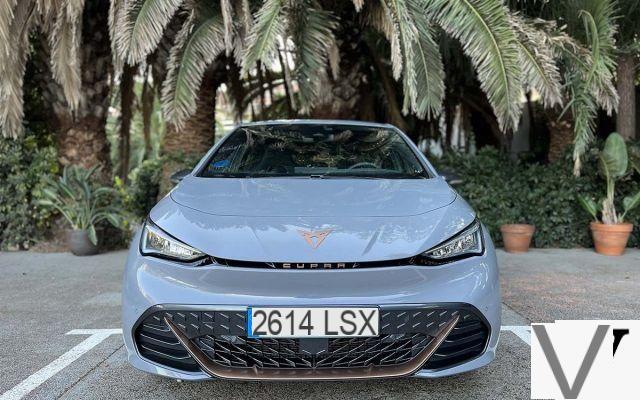
After the Formentor entirely created by itself, CUPRA is using the platform of the Volkswagen ID.3 to launch its second new model in a 100% electric version CUPRA Born. A variation with a seductive and sporty style, but which struggles to hide its resemblance to its German cousin.
Like Citroën with DS or Volvo with Polestar, CUPRA is the new automotive brand launched by SEAT to develop vehicles that stand out from its own production. This newborn had made a strong impression with its Formentor model launched at the end of 2020, but it's a little different with the CUPRA Born which is based on the same MEB platform as the famous Volkswagen ID.3.
Produced in the same German factory in Zwickau, the Born represents more a variation of the latter than a real new model perfectly embodying the radical and sporting DNA of CUPRA like the Formentor. We nevertheless find an inspired stroke of the pencil that manages to infuse Born with a strong character.
 Summary
Summary
- A ceremonial CUPRA
- 100% electric, and net CO2 neutrality
- Driving license
- CUPRA Born: autonomy and recharging
- On board the CUPRA Born
- Full of technology on board
- CUPRA Born driving assistance
- CUPRA Born data sheet
- CUPRA Born data sheet
- CUPRA Born V review: should we crack?
A ceremonial CUPRA
Variation or not, we must give back to César what belongs to César and recognize that the manufacturer brings an innovative style in terms of design. La Born, named after Barcelona's trendy “El Born” district, has a sleek silhouette that catches the eye. The same goes for the original interior trim, entirely designed with recycled materials, particularly from plastic waste collected in the ocean.
Different power levels varying from 150, 204 to 230 hp, are offered, but only the 170 kW (230 hp) “VZ” finish will benefit from the e-Boost which in principle characterizes real CUPRAs. In 2022, a wise version equipped with a small 110 kW (150 hp) electric motor will complete the catalog. For this test under the Catalonian sun, we took the wheel of the “V” version equipped with an electric unit of 150 kW (204 hp) and marketed without bonus from 40 €.
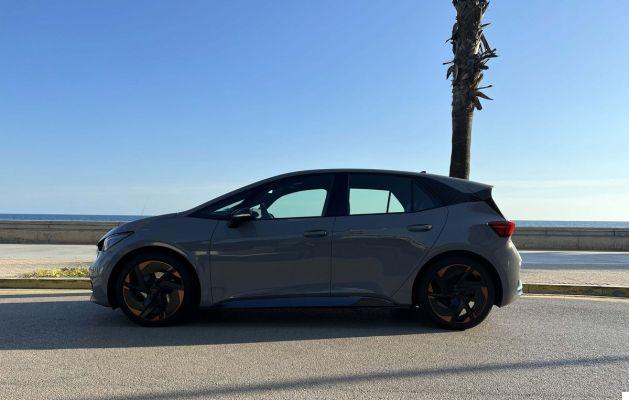
100% electric, and net CO2 neutrality
With a sport-style Born, the manufacturer aims to shake up the electric compact market. It is also the first model to offer net CO2 neutrality. In addition to using materials from renewable sources such as Dynamica recycled suede and Seaqual fabric made from renewed marine plastics, the brand offsets remaining emissions by investing in certified environmentally friendly projects.
Although produced in Germany, the Born was developed at the Martorell headquarters in Barcelona. The designers have worked to give it a CUPRA identity by refining in particular the aerodynamics of its lines, but also by lowering its chassis (15 mm less on the front axle and 10 mm less on the rear axle) compared to to other vehicles based on the standard Volkswagen MEB platform.
It is in terms of design that the Born manages to distinguish itself the most from the ID.3, and more generally from the electric compacts on the market. With its ribbed plunging bonnet, its imposing air intake, its hypnotic Full LED signature, its aerodynamic rocker panels, its large 18-inch rims (19 and 20 inches as an option), its characteristic copper elements or even its spoiler and its LED strip through the back, it displays a rather devastating aggressive look.
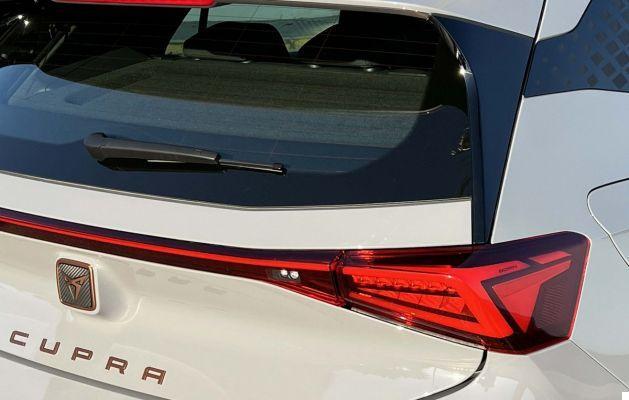
Driving license
The Born has an adaptive suspension system (DCC) adjustable at will over 15 levels for more or less flexible or sporty driving via the “Individual” mode. On our test version, four driving modes are available: “Range”, “Comfort”, “Performance” and “Individual”. A fifth CUPRA mode will only be available with e-Boost on the “VZ”. Radical transformation is therefore out of the question for this CUPRA “V”.
For a 100% electric model, its braking system is sorely lacking in bite. Fortunately, activating mode "B" via the gear selector makes it possible to reinforce the power of the engine brake and to drive with only one pedal, but without being able to bring the vehicle to a complete stop. Note that the braking power can be increased via the (sometimes tortuous) settings of the on-board computer. Even if the Born shows a certain dynamism in this mode, it does not have much of a sportswoman.
The acceleration is frank (the 0 to 100 km / h is shot in 7,3 seconds), but it is distinguished above all by its moderate average consumption of 19,1 kWh / 100 km at the end of our test. It makes you wonder if the brand wants to change its positioning and compete with its parent company SEAT, to which this model would suit much better! Remember that the Born was initially presented as a concept under the SEAT crest.
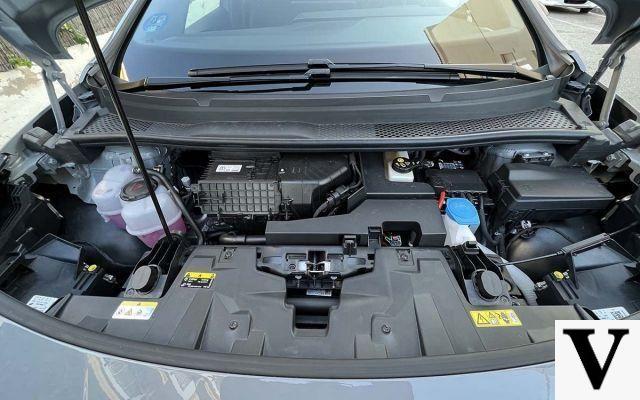
CUPRA Born: autonomy and recharging
Like the ID.3 Pro Performance, the Born is powered by a 58 kWh battery housed under the floor. According to the WLTP cycle, it would be able to cover a range of 424 km. During our test, we left with a total reserve of 334 km (calculated on the basis of the last trip made). After a trip of 129 km during which we drove in town at a walking pace, then mainly on the motorway at a speed between 80 and 120 km / h, we had exactly 200 km of autonomy on the odometer on arrival.
Very satisfactory results which show that the braking energy recovery system as well as the on-board thermal management system make it possible to optimize the vehicle's range. In terms of recharging, the Born can be connected to terminals up to 11 kW in alternating current, and up to 120 kW in direct current.
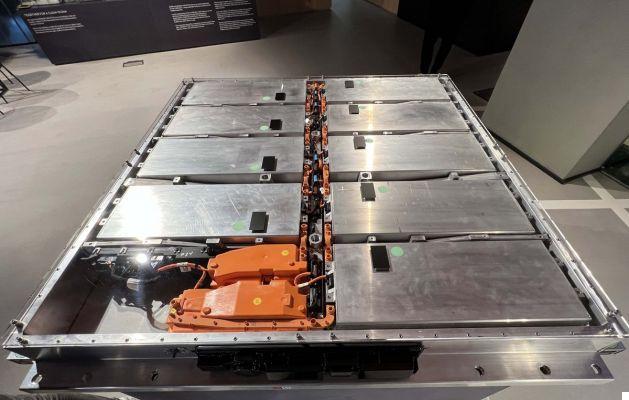 CUPRA Born batteries
CUPRA Born batteries
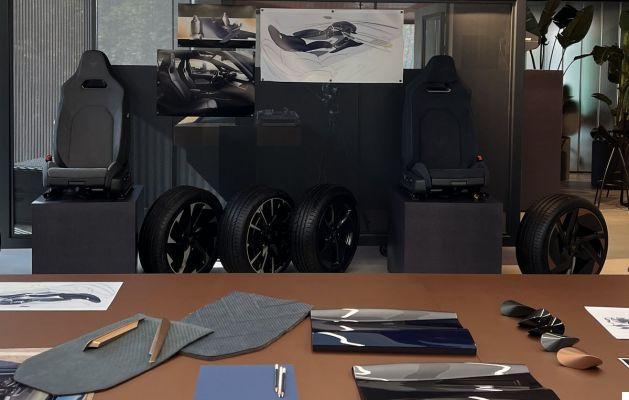 CUPRA exhibits the various elements designed by it
CUPRA exhibits the various elements designed by it
 The 3 rim models created for the Born
The 3 rim models created for the Born
It takes around 8h30 to recharge the vehicle to 80% on a 7 kW Wallbox, and only 45 minutes on a fast terminal up to 100 kW. On the other hand, it takes more than twenty hours to fully recharge the battery from a household outlet. For the VZ version, CUPRA announces the possibility of recovering 100 km of range from a 170 kW charging station in just 7 minutes.

On board the CUPRA Born
CUPRA has redesigned the interior of the Born, which is less austere than that of the ID.3. Like the CUPRA Leon, it is fitted as standard with wraparound bucket seats and a sport-style multifunction steering wheel. Unfortunately, we find the gear selector placed high at the rear right of the steering wheel. A strange positioning impractical in use, because you have to contort yourself to see what you are doing. Without a gear selector, the central console is found quite empty, especially since most of the physical control buttons have disappeared in favor of touch controls. As with all the other recent models of the VW group, the all-touch has undoubtedly been taken too extreme.
The Digital Cockpit consists of a small 5,3 inch instrumentation screen. It displays essential information such as speed, remaining range, speed limits, driving aids and navigation instructions. In the center, there is also a large 12-inch touch screen as standard. Slightly tilted towards the driver, the latter is very responsive while offering excellent readability whatever the light conditions. The head-up display is only available as an option on this version.
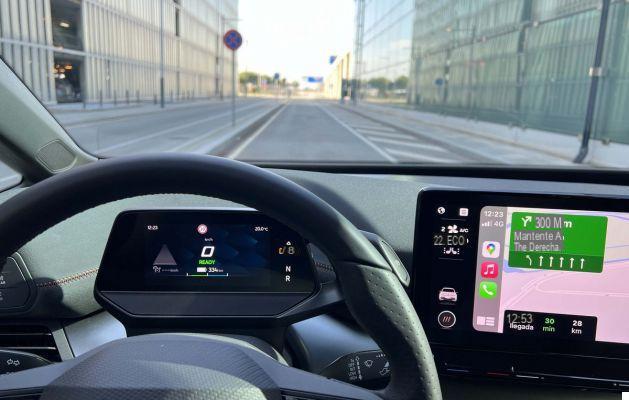
4,32 meters long, it shares the same dimensions as the ID.3 and the same rather generous roominess for the category. The driving position easily adapts to all types of builds. The seat is a little firm, but enveloping. Rear passengers aren't bad either, with decent legroom.
Thanks to the absence of a central tunnel and a fairly high roof guard, it is possible to comfortably accommodate two adults and a child in the rear. Two USB-C ports for plugging in and charging a smartphone or tablet are available on the back. On the trunk side, the Born has a loading capacity of 385 liters and a 12-volt outlet that is always handy when needed.
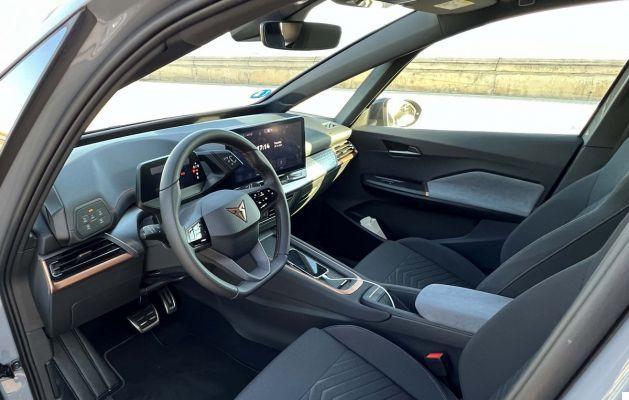
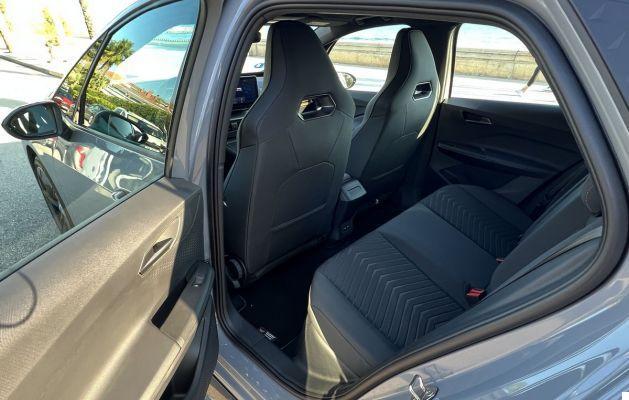
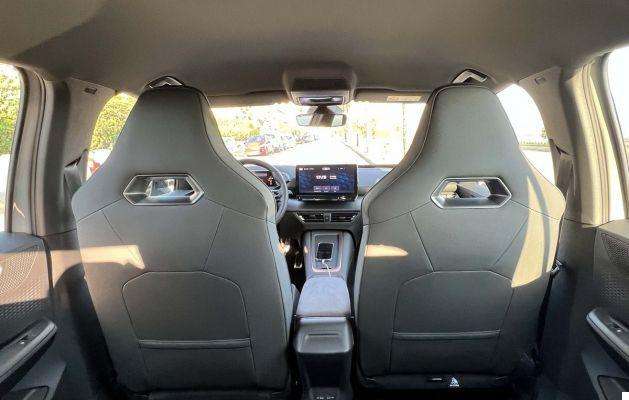
Full of technology on board
The infotainment system, which consists of a 12-inch touch screen, is used to control almost all of the vehicle's functions: air conditioning, energy management, heated seats, driving assistance and multimedia. Ergonomics really suffers from the lack of physical buttons, if only for the air conditioning. Tapping on the screen or battling with the touch buttons below it while driving is neither practical nor prudent.
The graphical interface is very neat, but it conceals a host of menus and sub-menus in which we get lost easily. It takes some time to figure out how to access essential features like adjusting engine brake power or configuring driver aids.

The digital instrumentation is ultimately easier to control via the steering wheel controls, even if we regret again the implementation of impractical touch buttons in use. It is possible to display the information of your choice such as consumption data, the battery level (expressed in percentages and in kilometers), adaptive cruise control (predictive ACC), navigation instructions or even music. .
Equipped with a SIM card at the factory, the vehicle provides access to a multitude of online services and applications, including a voice recognition system in progress. Activated via a steering wheel control or by saying the words "Hola hola", it allows you to ask in particular to put the air conditioning, make a phone call or start a piece of music without taking your eyes off the road. The Born is also compatible with Apple CarPlay and Android Auto, which remain the ultimate for all multimedia applications.
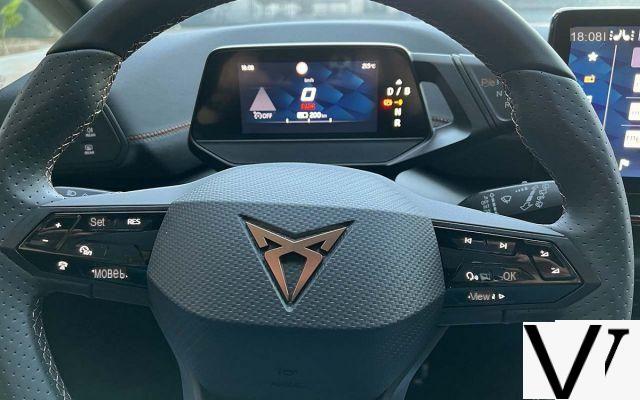
CUPRA Born driving assistance
Our trial version features a level 2 semi-autonomous driving system (“Travel Assist”) coupled with intelligent cruise control, and the navigation system. It analyzes data provided by on-board sensors, road signs and real-time traffic and road instructions from the navigation system to automatically adapt vehicle speed as it approaches a roundabout or intersection. , for example. The latter is supplemented by the very annoying “Lane Assist” (lane keeping aid), activated by default.
This overly sensitive system steers the vehicle on its own to put it back in the lane if the driver leaves a lane without having first put the flashing light on. It works well on well-marked roads, but as soon as old and new markings intersect, misinterpretations can hold some serious scares. La Born also has a reversing camera and the usual radars for parking assistance.
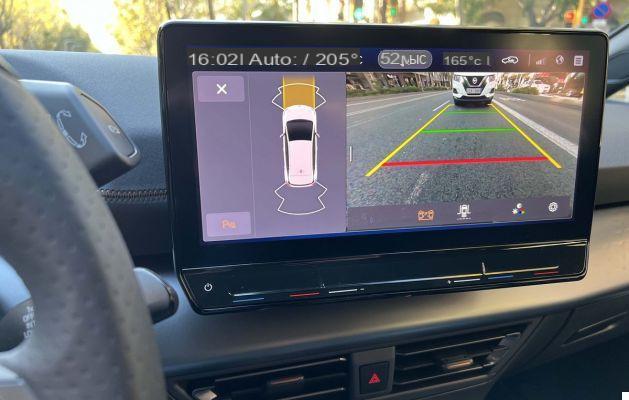
We were unable to test the mobile application, which however promises to be as complete as for the Formentor with in particular many remote controls and features dedicated to vehicle charging. A complete technological equipment that surpasses that of most of its zero-emission compact competitors.

CUPRA Born data sheet
CUPRA Born : from € 40.
CUPRA Born data sheet
Dimensions
Length 4,32 m Width 1,81 m Height 1,54 m Wheelbase 2,77 m Boot volume 385 liters Empty weight 1 kg Number of seats 990
Engines
Engine 58 kW Power 204 hp Torque 310 Nm Lithium-ion battery
performances
0 to 100 km / h 7,3 seconds Maximum speed 180 km / h
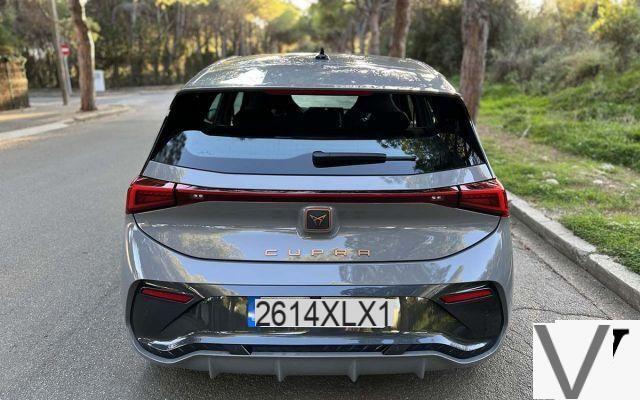
CUPRA Born V review: should we crack?
CUPRA's first electric compact is arguably the sexiest model in its class. Its aggressive and sporty design stands out against the competition. But the driving experience unfortunately does not live up to the manufacturer's promises. With identical engines, but more complete equipment, the Born V is priced at 40 € (excluding ecological bonus of 250 €), ie 1 € more than its German cousin ID.000.
For now, the brand has not yet unveiled the prices of the other versions of the Born expected for the end of November 2021 and the first quarter of 2022. This first foray into the electric car market should be decisive for the future of the brand.


























